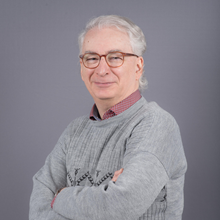Thierry Bal, Directeur de recherches à l'Institut NeuroPsi à Paris

La médaille d’honneur du CNRS récompense les agents qui ont travaillé au moins 15 ans pour l’organisme en contribuant de manière particulièrement remarquable aux activités du CNRS.
Le CNRS décernera la médaille d'honneur du CNRS à Paul Salin, DR CNRS, jeudi 18 septembre 2025 après-midi. A cette occasion, le CRNL organise une conférence avec son collègue et ami Thierry Bal, Directeur de recherches à l'Institut NeuroPsi à Paris.
Programme
14h00 : Mot d’introduction, Dr. Laurent BEZIN
Directeur du CRNL
14h15 : Conférence-Témoignage, Dr. Thierry BAL
Directeur de recherches à l'Institut NeuroPsi à Paris
Cellular and network mechanisms of rhythmic recurrent activities in the claustrum
The apparition of slow waves activities in the sleeping brain is ancient and simultaneous with the apparition of the claustrum, both probably originating in the common ancestors of amniotes 350 million years ago. In mammals, the claustrum is a thin bilateral structure located between the striatum and deep layers of the insular cortex, with the particularity of connecting bidirectionally the majority of cortical regions. The mouse claustrum is prominently active during low vigilance and sleep synchronized activities and has been shown to coordinate slow waves in the neocortex (for a review see Do et al., TINS 2024).
Claustrum bursts of spikes recorded in the sleeping mouse are tightly linked to delta waves, discharging immediately before the onset of the down state and are thus rhythmically active at the frequency of this sleep rhythm.
The question remains as to what mechanism might be responsible for the rhythmic firing of excitatory projection claustrum neurons: Could it be generated solely by large-scale recurrent synaptic interactions between the cortex and the claustrum, or could the claustrum be a central pattern generator (CPG) of rhythmic recurrent activities? Although it was once thought that the generation of rhythmic activities in the electroencephalogram were due to the interaction of very large networks of neurons and therefore could only be studied in vivo, we and others have shown that network oscillations, such as thalamic spindle waves and cortical Up and Down state oscillation can be maintained in small networks of neurons ex vivo. In the present study, we show that the claustrum network isolated in brain slices is the endogenous generator of state-dependent (0.01-1 Hz) rhythmic activities recorded in excitatory cortically-projecting cells and GABAergic interneuron subtypes. The state-dependant CPG properties of the claustrum combined with its widespread reciprocal connections with the cerebral cortex could play a role in large-scale coordination of SWS rhythms.
15h15 : Remise de médaille, Mme Florence Morineau
Déléguée Régionale CNRS Rhône-Auvergne
15h45 : Pot de remise de médaille

CRNL | CH Le Vinatier | Bâtiment 462 Neurocampus Michel Jouvet | Amphithéâtre | 95 Boulevard Pinel | 69500 Bron











